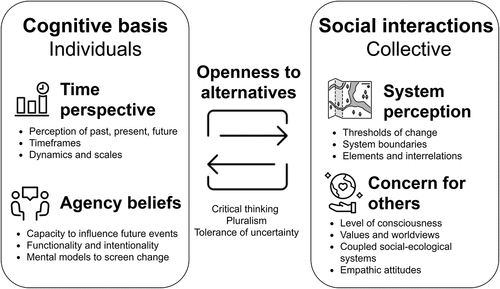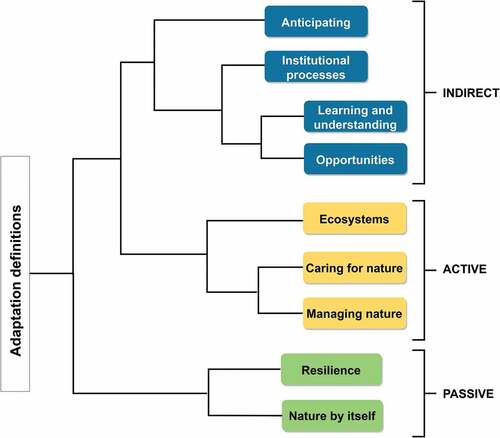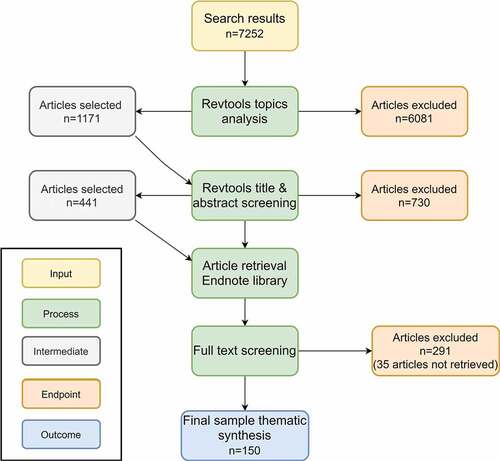Figures & data
Figure 2. Analytical framework for adaptation concepts. The first domain (left) represents individuals’ cognitive capacity to understand temporal characteristics of social-ecological processes and ability to respond to change and influence future events. This domain shapes the social, collective ways of understanding the system (right), its elements, boundaries, and the level of concern towards others. Openness to alternatives (center) or the individual and collective capacity to critically think about current options to deal with change helps to connect these domains. Based on Ahvenharju et al. (Citation2018) and Feola (Citation2015)

Table 1. Summary of concepts used in the analyses, explaining the ontological basis, epistemological approach, and theoretical perspective assigned to grouped themes from the adaptation concepts. Adapted from Moon and Blackman (Citation2014, p. 1169)
Table 2. Examples of definitions extracted from the articles containing definitions of adaptation and the emergent themes and clusters extracted from the definition. Clusters follow Full set in Appendix A
Table 3. Emerging clusters (grouped themes) of adaptation in biodiversity conservation. Each concept was analysed to establish the scholarly tradition, concepts, and theories informing adaptation (ST), ontological basis (OB), epistemological approach (EA), and theoretical perspective (TP); OB, EA, and TP follows Moon and Blackman (Citation2014)
Figure 3. Cluster analysis by word similarity of the themes within the clusters and definitions. Clusters in blue represent Indirect mechanisms to create the right conditions; clusters in yellow are Active interventions and in green Passive interventions.

Figure 4. A conceptual model for adaptation in conservation. Depending on the perception of change (1) and the desired goals (2), the interventions (3) can differ. The options (4) for adaptation represent indirect underlying basis for all adaptation types, which can be an incremental process and separate from transformation, a continuum of resistance, resilience and transformation, or occur via transformation as an integral and necessary part of adaptation.


